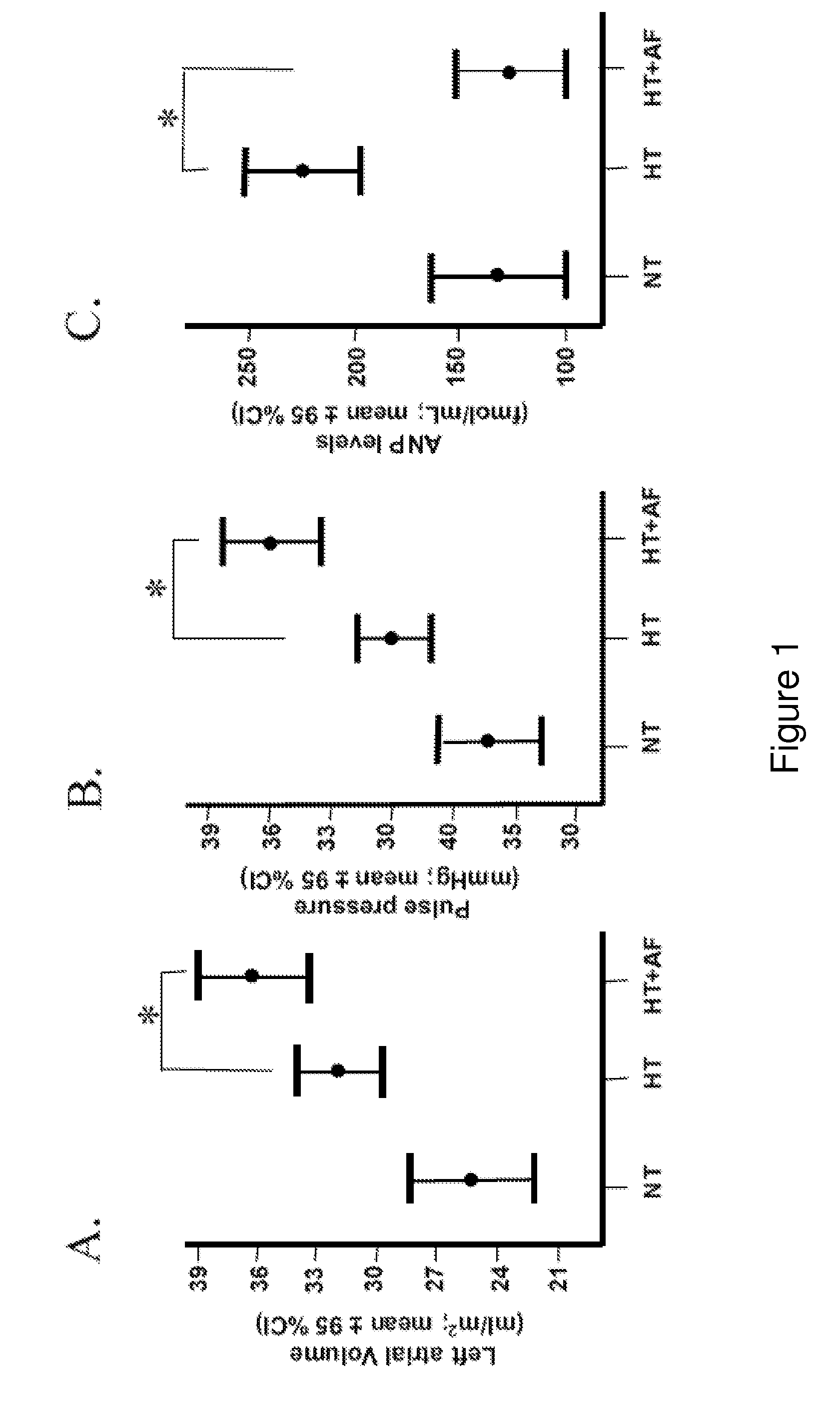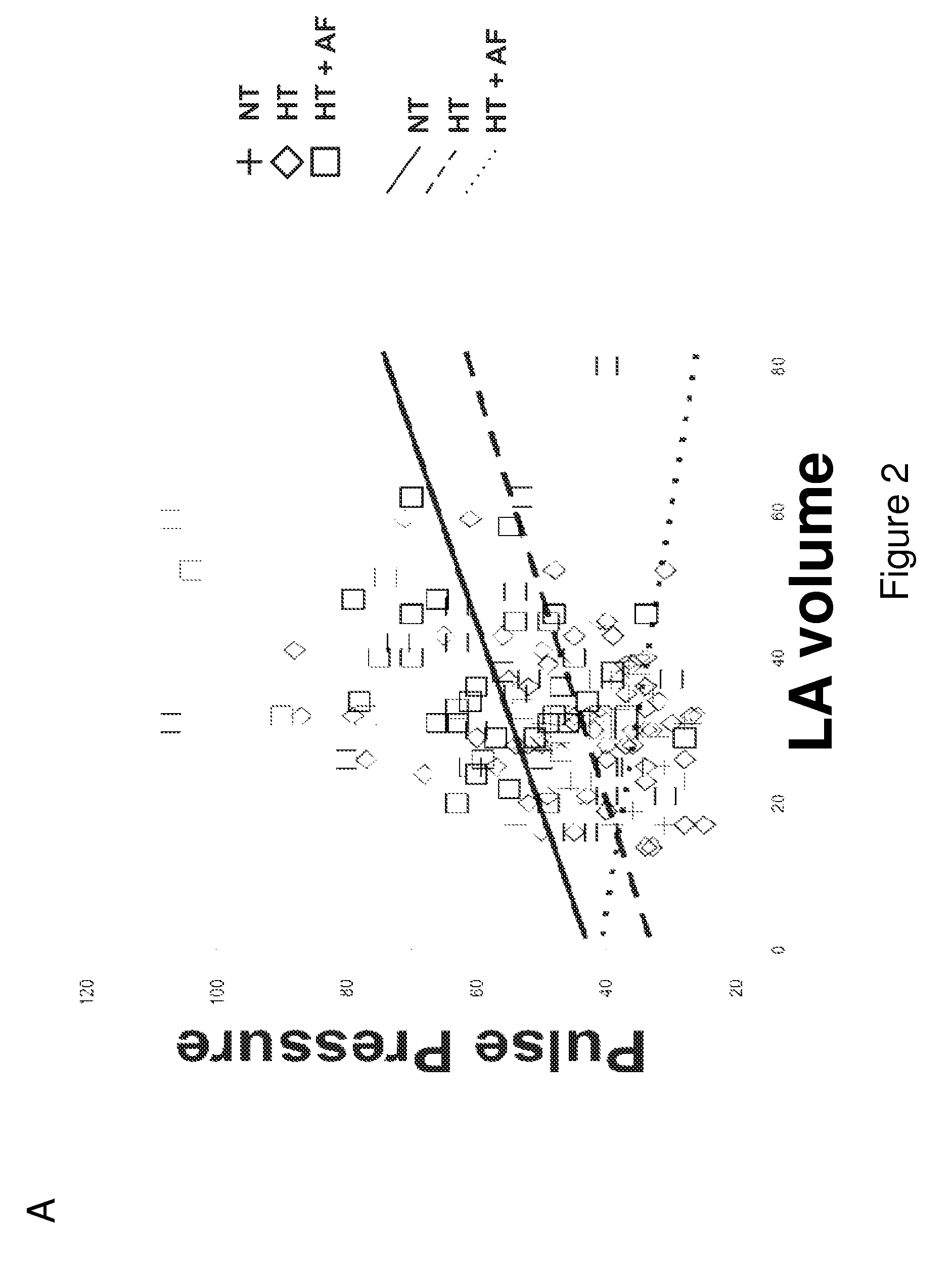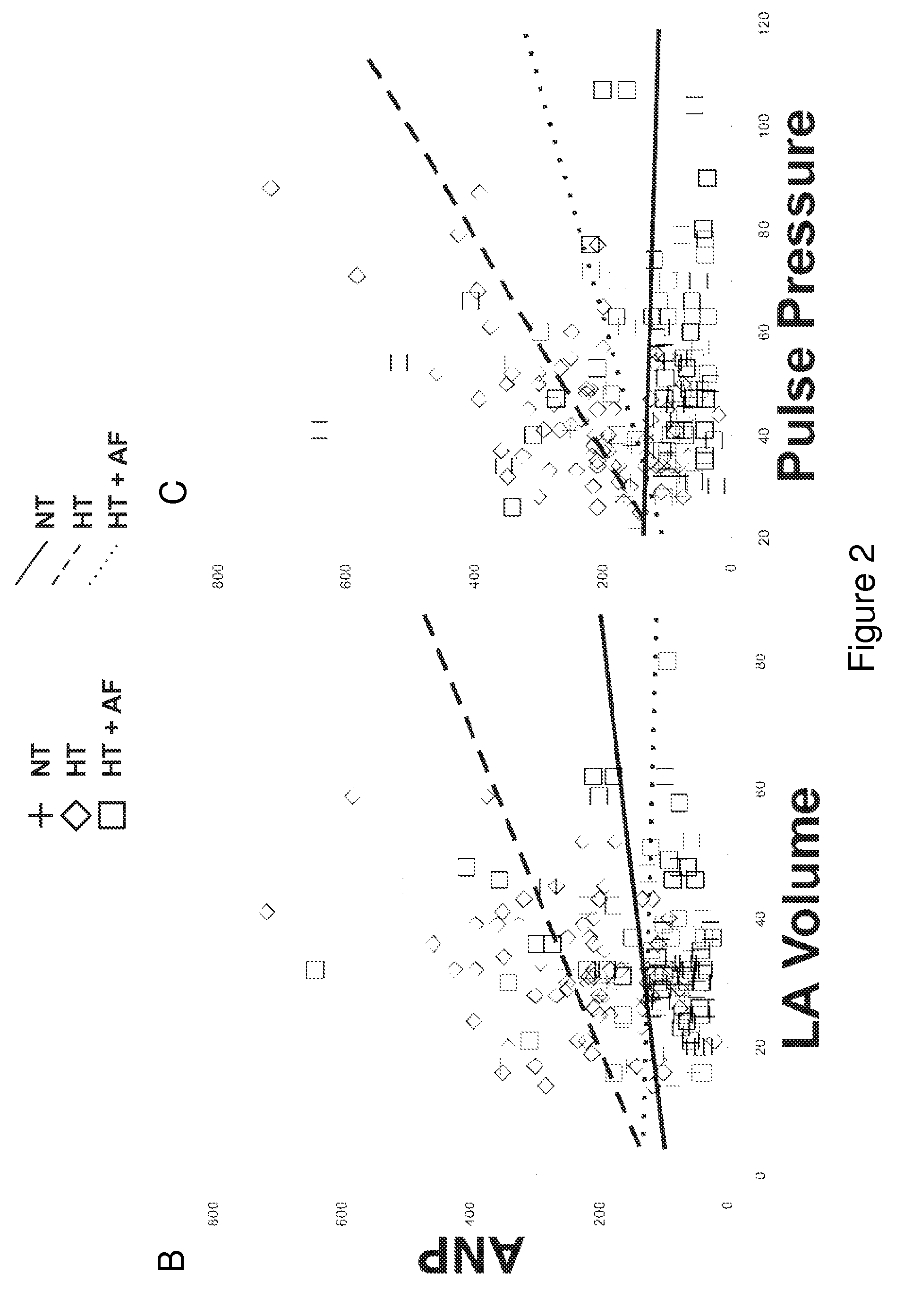Method of determining a predisposition to atrial fibrillation (AF) in a subject
- Summary
- Abstract
- Description
- Claims
- Application Information
AI Technical Summary
Benefits of technology
Problems solved by technology
Method used
Image
Examples
example 1
Patients Material and Methods
[0173]The discovery cohort comprised 169 individuals: 148 patients with a validated history of hypertension, in sinus rhythm at the time of the study: 74 with one or more previous episodes of paroxysmal AF documented on ECG (HT+AF) and 74 individuals without any previous known episode of AF (HT). Moreover, 21 normotensive individuals without history of AF were also enrolled and used as reference for several clinical, metabolic and neurohormonal assessments. Patients were recruited in 3 clinical centers, and each center ethics committee approved the protocol of study. All participants gave their written informed consent to participate in the study.
[0174]The exclusion criteria were the presence of secondary causes of hypertension, the presence of AF and other atrial arrhythmias at the time of the study, valvular heart disease, heart failure, coronary artery disease, hepatic, renal, thyroid or lung diseases. All participants underwent physical examination a...
example 2
Results
[0184]The characteristics of participants are shown in Table 2 below. The mean age, the percentage of women and mean BMI were similar for both groups. HT+AF patients had higher waist circumference, SBP and pulse pressures compared with HT patients (Table 2). Electrocardiographic assessment showed that HT+AF patients had lower HR. However, no differences in the duration of QRS, QT and P-R were found between groups. Echocardiographic LA volume was greater in HT+AF compared with HT patients (Table 2). However, there were not differences in LV mass, interventricular or posterior wall thickness. Metabolic and neurohormonal profiling showed that HT+AF patients had higher HDL and lower fasting glucose, but a trend towards increased total cholesterol and triglyceride levels compared with HT patients (Table 2). Moreover, HT+AF patients had lower plasma ANP, aldosterone, and renin levels, and a trend towards lower plasma adrenaline without differences in noradrenaline levels (Table 2)....
example 3
Characteristics of Polymorphic Markers rs4674485 and rs1466560
[0195]SNP rs4674485, the top marker associated with AF according to the present invention, is located in an area where QTLs for blood pressure,30 and cardiac mass 31 have been identified. SLC4A3 is located ˜300 kb upstream rs4674485 (FIG. 3). This gene encodes a protein integral to plasma membrane that exchanges Cl− / HCO3− and contributes to regulation of intracellular pH and chloride in cardiac muscle, with possible effects on excitability and contractility.32 Human SLC4A3 / AE3 polymorphisms have been associated with seizure disorders.33 However, it is unknown whether mutations of this gene were associated with AF.
[0196]SNP rs1466560 is located in a region harboring QTLs in rodents for heart rate,30 blood pressure,34 cardiac mass and stress responses (corticosterone levels and stress-related disease susceptibility).35 This area has also been previously identified by linkage analysis to harbor QTLs causing dilated cardiomio...
PUM
| Property | Measurement | Unit |
|---|---|---|
| Fraction | aaaaa | aaaaa |
| Fraction | aaaaa | aaaaa |
| Fraction | aaaaa | aaaaa |
Abstract
Description
Claims
Application Information
 Login to View More
Login to View More - Generate Ideas
- Intellectual Property
- Life Sciences
- Materials
- Tech Scout
- Unparalleled Data Quality
- Higher Quality Content
- 60% Fewer Hallucinations
Browse by: Latest US Patents, China's latest patents, Technical Efficacy Thesaurus, Application Domain, Technology Topic, Popular Technical Reports.
© 2025 PatSnap. All rights reserved.Legal|Privacy policy|Modern Slavery Act Transparency Statement|Sitemap|About US| Contact US: help@patsnap.com



